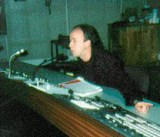Florida’s Creative Class Thesis and the Global Economy
Posted on | April 30, 2011 | No Comments
I had a chance to live in Wellington, New Zealand for a few years teaching television production and a graduate class on the geopolitics of  communication at Victoria University. Besides being the capital of the country, it’s a great little city that has used its English heritage to effectively draw from the British Commonwealth as well as America to create rich art, design and theater cultures. The city is mentioned in Richard Florida’s Flight of the Creative Class as an example of one of the enterprising nodes around the world that now compete in the global “creative economy.” After an interview with New Zealand native Peter Jackson, the Academy Award winning auteur of such films as King Kong and the Lord of the Rings series that was shot in New Zealand, Florida reflected on the role New Zealand’s capital city. Jackson was able to use the incredible profits generated by the Rings trilogy to build his Weta Digital studio and help catapult the kiwi capital into the global circuits of creative production and attract significant talent to “the land of the long white cloud“. [1]
communication at Victoria University. Besides being the capital of the country, it’s a great little city that has used its English heritage to effectively draw from the British Commonwealth as well as America to create rich art, design and theater cultures. The city is mentioned in Richard Florida’s Flight of the Creative Class as an example of one of the enterprising nodes around the world that now compete in the global “creative economy.” After an interview with New Zealand native Peter Jackson, the Academy Award winning auteur of such films as King Kong and the Lord of the Rings series that was shot in New Zealand, Florida reflected on the role New Zealand’s capital city. Jackson was able to use the incredible profits generated by the Rings trilogy to build his Weta Digital studio and help catapult the kiwi capital into the global circuits of creative production and attract significant talent to “the land of the long white cloud“. [1]
The World is Spiky
Florida critiques the central theme of Thomas L. Friedman’s The World Is Flat 3.0: A Brief History of the Twenty-first Century, arguing instead that the world is “spiky“. With this he means that economic activity tends to concentrate around economic regions and particularly cities such as Wellington that attract creative people and projects.
Richard Florida’s works on the importance of creativity in the global economy has received mixed reviews but stand as an impressive body of work. Among his books addressing the creative class thesis are:
- Who’s Your City?: How the Creative Economy Is Making Where to Live the Most Important Decision of Your Life (2009)
- The Flight of the Creative Class: The New Global Competition for Talent (2007)
- Cities and the Creative Class (2004)
- The Rise of the Creative Class: And How It’s Transforming Work, Leisure, Community and Everyday Life (2004)
He contends that the creative class is a key driver of economic growth in our modern economy, particularly when they use the new technologies. This group consists primarily of scientists, engineers, designers, professors, architects and even poets but also includes legal, business, and policy strategists. To compete effectively in the spiky world, countries need to be talent magnets.
9/11 and the Closing of America
Florida is an urban economist and theorist who began his query into the creative class in the wake of 9/11, when the Patriot Act and other security measures began to put pressure on immigration of creative talent into America. He has a high regard for the scientific and entrepreneurial talent coming in from other parts of the world. This led to his triple T list of crucial factors for the creative economy: technology, talent, and tolerance. He places a particular emphasis on the latter, stressing that economic regions and nations need to be open to different ethnicities, religions, and sexual orientations.
To develop economically, Florida encourages nations and regions to support their universities, particularly faculties that do science and technology; cultivate new industries that capitalize on creativity; prepare people for a creative global economy, and foster openness and tolerance to attract the creative class.
It’s an intriguing thesis, not one that is central to my own research agenda, but it does inform some of my interests, such as the fate of New York’s “Silicon Alley.” Primarily I use it to to remind my digital media students we live in a globalized political economy and they need to organize their education around that fact.
Citation APA (7th Edition)
Pennings, A.J. (2011, April 30). Florida’s Creative Class Thesis and the Global Economy. apennings.com https://apennings.com/meaningful_play/floridas-creative-class-thesis-and-the-global-economy/
Notes
[1] Richard Florida’s website is creativeclass.com
© ALL RIGHTS RESERVED
 Anthony J. Pennings, PhD is a professor at the State University of New York, Korea. Previously, he taught at St. Edwards University in Austin, Texas and was on the faculty of New York University from 2002-2012 where he taught Digital Economics and Media Management. He also taught at Victoria University in Wellington, New Zealand and was a Fellow at the East-West Center in Hawaii in the 1990s.
Anthony J. Pennings, PhD is a professor at the State University of New York, Korea. Previously, he taught at St. Edwards University in Austin, Texas and was on the faculty of New York University from 2002-2012 where he taught Digital Economics and Media Management. He also taught at Victoria University in Wellington, New Zealand and was a Fellow at the East-West Center in Hawaii in the 1990s.
Tags: Cities and the Creative Class > creative class > New Zealand > Peter Jackson > Richard Florida > The Rise of the Creative Class > Wellington > Weta Digital > World is Spiky
